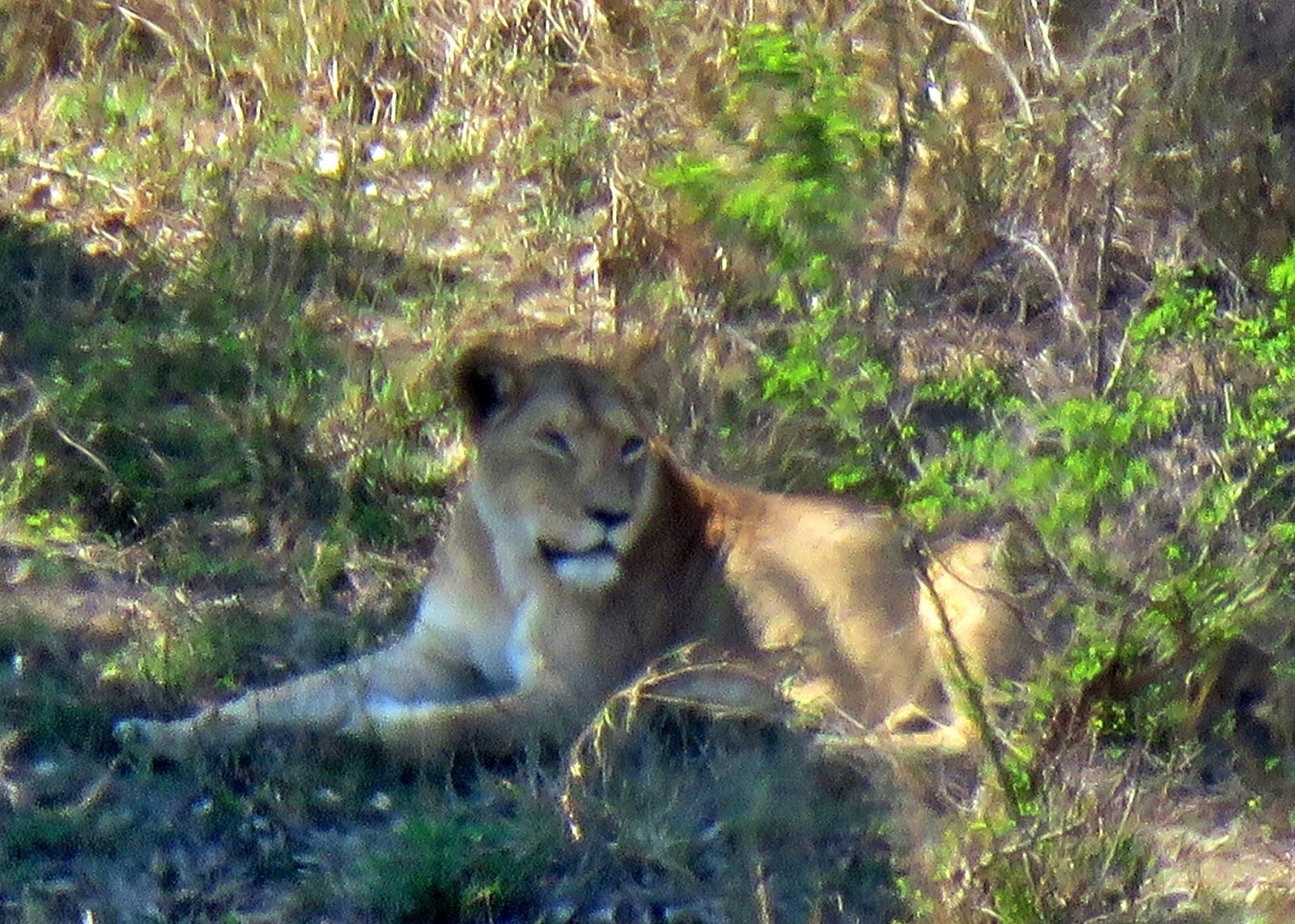 |
| This is “Little” (short for “Little Wart Face”). He visits almost daily. That’s why he has grass all over his snout. He likes to cool off in the cement pond, sleep under the shade of a tree in our garden and climb the veranda steps seeking pellets. What a guy! He’d just returned from eating from the bale of hay left in the neighbor’s driveway when they departed after the weekend. |
“Sighting of the Day in the Bush”
 |
| Mr. Frog has been enjoying an array of insects most nights which are attracted to the light. He appears to be getting rather plump. |
Yesterday afternoon, a water main broke close to Gate 2 in Marloth Park. Subsequently, we had no water for about 12 hours. Service returned in the middle of the night.
This morning we had a power outage, but fortunately, it only lasted about 10 minutes. When the power goes out, the wi-fi also goes out. As always, we shut down our laptops and phones, hoping for a return to service before too long.
 |
| We were so busy feeding the visitors last night, and we hardly had time to make our dinner. We couldn’t stop smiling. |
When the power returned, we were relieved. I hope neither of these is an issue with our upcoming dinner party in four days. It would be difficult to cook a big meal without water or power.
Yesterday, we read a post on Facebook by a homeowner that an area of Marloth Park was without water last December for 21 days. That would certainly be inconvenient.
 |
| Often warthogs from different “sounders” get into a scuffle over the pellets. |
Last night we used a bucket of water from the swimming pool to flush the toilet. This would get old after a day or two. Of course, the worst part would be when unable to take a shower. It’s not as if there’s a local health club where one could go to take a shower.
After all, we’re in the bush in Africa, and things aren’t the same as in many countries throughout the world. And, although there are several adaptations one must make, coming from other countries, it isn’t really that rough.
 |
| There were one male and three female zebras in this “dazzle.” |
Last night while brushing my teeth, a large black bug fell off my head when I bent down to rinse my mouth (using bottled water, as always). I didn’t scream or flinch. I gently picked it up with a tissue and took it outside to deposit it into the garden. Years ago, I would have called Tom to help and did a bit of screaming. No longer.
 |
| A young Big Daddy attempting to eat some greenery inside the fenced area in the garden. |
It must have fallen into my hair while we sat outdoors last night reveling in the numbers of wildlife that came to call. It wasn’t as if we had more than a dozen at any given time but more so that they kept coming and coming, hour after hour.
Recently, I ran into local friend Gail at the market, and we giggled over how we never tire of the wildlife. If anything, as time goes on, we become more and more interested in them, as we learn about them, and as time goes by, we learn more about the nuances of certain animals.
 |
| With just the two of us at Two Trees, Tom spotted this female lion. |
As shown above, in our main photo, coming to know the peculiarities and habits of certain visitors only adds to the pleasure and significance of seeing them time after time.
Most days, we see at least one animal that is new to us. Over this past nine months, we’ve been able to identify frequent visitors by certain markings, size of tusks, horns, and variations in stripe patterns. It’s now become easy for us to realize someone is new to us.
 |
| She may have been perusing the area for her next meal. |
We welcome them all, familiar and new, with open arms to partake of our seemingly endless supply of pellets, carrots, apples, and pears, all suitable foods for them.
 |
| A large bull elephant on the river bank. Check out those tusks! |
Today, after friend Kathy stops by and drops off some much-needed ingredients she picked up in the big city for the upcoming Thanksgiving dinner party on Saturday (thank you, Kathy!), we’ll head out for our usual drive in the park to see what wonders Mother Nature may have in store for us.
It will be another good day in the neighborhood! I hope you all experience the same!
Photo from one year ago today, November 13, 2017:
 |
| Another of Tom’s excellent bird photos, two Green Parrots admiring each other. For more photos, please click here. |


















































